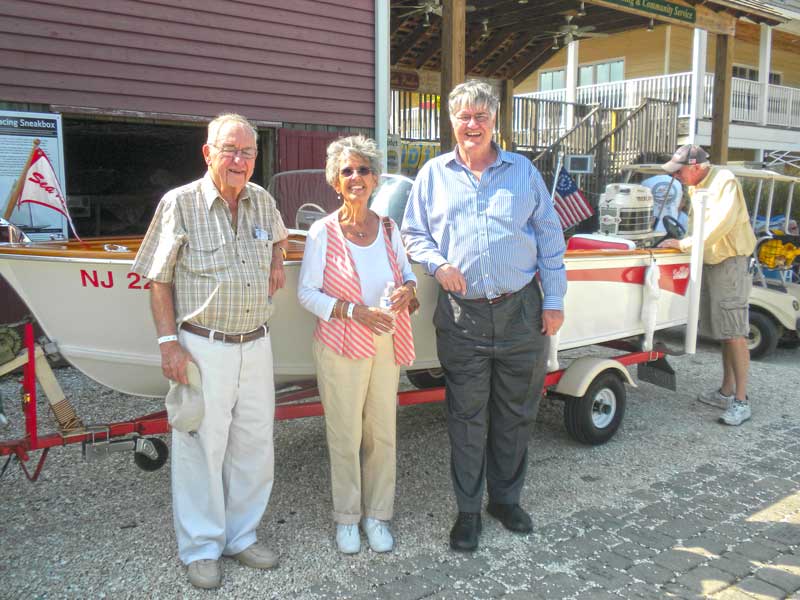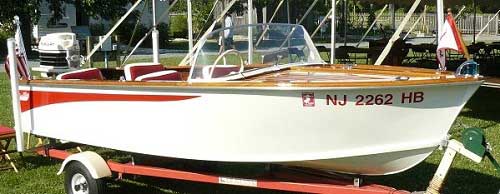A young teenage boy eager to explore the world (and/or start dating) can see the years until he can get a driver’s license as an absolute eternity. That’s where I was during that stage, with New Jersey’s age requirement of 17 years annoyingly far off in the distance.

Solution? I immersed myself in boating.
My 14-foot classic Sea Mac outboard was slipped at my uncle’s private pier in Seaside Park, NJ. We went waterskiing north of the short Rt. 37 bridge in Seaside Heights. For an after-school cruise, I’d shoot across Barnegat Bay and up the navigable route into downtown Toms River.
An “adventure” took me up to and through the Point Pleasant Canal, where tide changes made for big and steep waves as we cruised beneath each bridge that crossed the canal.
The big trip I’d take periodically began by heading South from the park to Barnegat Inlet, entering the Atlantic Ocean by following the fishing boats through the Inlet, and on a calm day, heading parallel to the coast, north to the Manasquan inlet (at least two six-gallon gas tanks of boating distance). It was about 21 miles of ocean travel according to the charts, running just offshore between the two inlets. Then it was a trip back through the Point Pleasant Canal, heading south and down the Bay, back to Seaside Park.
While Barnegat is a rough inlet depending on tide changes, going out with the bow up seemed safe, even in a 14-foot outboard powered boat. Or just maybe I was a crazy early-aged teenager who assumed that no serious harm could come to him.
That boat transformed me as I grew into a young man. Although the varnishing and painting in the early spring was more like punishment, it was also freedom. It was also excitement and an opportunity for early teen dating.
Plywood-sided and plywood-bottom outboard powered boats were popular after World War II. In the 1960s, fiberglass boats began to dominate. An inboard was a rich man’s boat, but an outboard seemed to be within reach for a lot of folks.

Sea Mac wooden boats were typically an outboard-powered, 14-foot deluxe runabout for water skiing. They used Philippine Mahogany lumber stock, covering boards and hull framing with marine-grade plywood that was essentially used everywhere else. They added forward steering, remote controls, a windshield, and two rows of vinyl-covered, padded seating made for a Bill Deed-designed watersports boat that handled lake, bay, inlet, and ocean waters very well. Bill Deed’s boat designs—mostly power cruisers, dating from 1950-56—are now housed at the Mystic Seaport Museum.
Although prototypes were tested in 1954 with a 20-hp outboard, most 14-foot wooden Sea Mac boats used a 40-hp engine. A few were even repowered with a 70-hp “Tower of Power” Mercury Marine outboard. These boats were tough and often outlasted more than one motor’s life span on its transom.
On one occasion this sporty runabout was a prize on “The Price is Right” in the 1961 show season. Sea Mac also built eight-foot prams in its New Jersey production boat building operation. Unfortunately, the Sea Mac boat brand disappeared around 1963.
Mine was always watertight and generally maintenance-free except for annual re-varnishing and some detail painting of the floorboards. For me, it was lots of fun with little downtime. The perfect boat for me.
She also seemed fast on the water. And agile, so I learned to miss Barnegat Bay’s local two-inch narrow channel markers back then while on plane at cruising speed. Impromptu races against any and all other boats also kept me entertained three seasons a year.
I also had the “Chapman Piloting & Seamanship” book that helped me “go boating” over the winter. I received it when I took the Coast Guard Auxiliary course at the age of 10. I was the youngest member of my class, and I passed!
For me, boats and boating have been a part of my life since grade school. I grew up near the water and have stayed near it all my life, first in New Jersey, then in California, and back east along the Hudson River and canals, and now the Chesapeake Bay. Still love it!
By Chris "Seabuddy" Brown